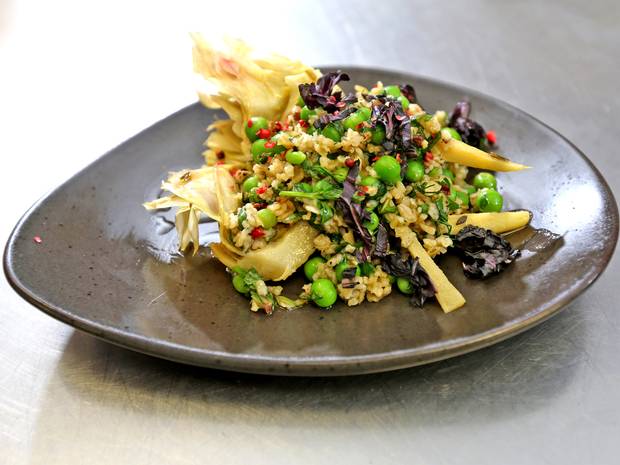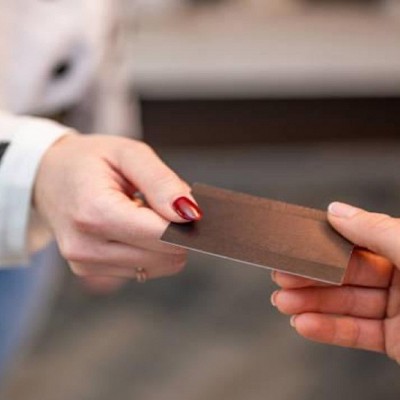In Britain, alternatives to white rice or pasta have been largely limited to couscous, bulgur wheat, and more recently, quinoa. Now, however, chefs such as Israeli-born Yotam Ottolenghi and consumer ranges such as Merchant Gourmet are showing us that there are a lot more exciting – and healthy – gourmet grains out there. The list makes exotic reading. As well as Palestinian freekeh there's maftoul (bulgur that's sun-dried then hand-rolled to look like a larger, wholegrain version of couscous) and Middle Eastern mograbieh (giant couscous). From other parts of the globe there's amaranth, black and purple barley, wheatberries, kamut, Camargue red rice and many more. Freekeh, though, is the grain that Ottolenghi and other chefs are really freaking out about – in a good way. He tells me that when he gets home to his parents in the hills around Jerusalem, the first thing he does is rush to his local Arab grocer to buy a bag of the aromatic grain. "'Depth' and 'earthy' are words bandied about liberally in the world of food, but freekeh is the real deal," he says. "I'm addicted to it." One can see why. There's little not to love about this ancient grain, from its texture to its taste, nutrition and pocket-friendly price. If, like me, you've been to too many bring-a-dish parties where the collective table is littered with bowls of tasteless overcooked couscous passed off as salad, freekeh seems a welcome alternative. If you need inspiration for how to prepare freekeh, catch up with the second episode of Ottolenghi's Mediterranean Feast on Channel Four, and you'll see the chef in Istanbul marrying the grain with globe artichokes. Incidentally, this salad appeared on the very first menus at Ottolenghi's smart Soho restaurant, Nopi, when it opened in 2011.
Television series such as Mediterranean Feast and books such as Plenty and Jerusalem prompted numerous calls from the public to Ottolenghi stores asking where to buy the specialist products mentioned. So last year the chef set up an online store, selling ingredients that are sourced as directly as possible from small producers. The freekeh comes from a dynamic young British company called Moon Valley that, in the words of the Ottolenghi website, buys directly from Palestinian farmers to "develop sustainable agricultural businesses in a region that is strangled economically". The freekeh, sold as whole-grain or cracked, is produced using traditional artisan methods. Myles Broscoe, Ottolenghi purchasing manager, says he expects online sales of freekeh and other grains to at least triple in 2013. "The figures suggest freekeh has huge potential," he says. To explore that potential for myself I joined Ramael Scully, Nopi's dauntingly creative Malaysian-Australian head chef. "Freekeh is lovely with lamb, chicken or vegetables," he tells me.
"Like couscous or bulgur it's easy to cook, but unlike them, it has really complex flavours." When cooking freekeh you need to decide whether to use wholegrain or cracked (which looks like bulgur but green). "I usually recommend wholegrain for salads or pilafs as there's less chance of overcooking it – you want it to retain a bit of crunch," says Scully. "Cracked freekeh is great in stuffings and in soups. At Nopi we sometimes stuff squid with it." As aromatic dishes fly out of the kitchen to feed hungry West End diners, Scully and I make the braised artichokes with freekeh grains and herbs that featured in the TV show. Chef has already pre-cooked the freekeh in a vegetable stock, so all we need to do is blend it with artichoke hearts (also prepared and braised in advance, mercifully), peas and generous grinds of pink peppercorns.
"Freekeh gives the salad texture, plus a lovely smoky flavour," Scully enthuses. "I love it." Our second dish, equally simple and kind on the pocket, is a Freekeh pilaf, made the way Ottolenghi makes it in Jerusalem: caramelise plenty of onions, add a decent stock (home-made chicken stock is best), spices and wholegrain freekeh. Steam it, let it sit, and spoon on a dollop of creamy yoghurt to balance out the sweetness, and you have a tasty supper dish that's also nicely nutritious. It's that nutritional value that people such as Stacy Meech, head of food at the Vital Ingredient salad-bar chain which has 11 branches across London, are so excited about. Just last month, the chain launched a range of Super Salads in which protein-rich freekeh is the star of the show – as the waitresses' T-shirts saying "Get Super Freekeh" testify. "Consumers are no longer prepared to put up with sandwiches or dull couscous salads," says Meech. "Our customers want stuff that's really healthy, so we're giving them supergrains that are. We cook them every day on site so people know the salads are fresh and we publish the nutritional information on our website so they can check it out. A 100g portion of freekeh contains over 11g of protein – more than a quarter of an adult's recommended daily intake. It's low-fat and low-GI too.
We believe we can make healthy eating cool rather than cranky." It's just a matter of months before we'll find freekeh in the supermarkets. Several are planning to include it in pre-prepared salads or sell them as dry grains under their own brand. Merchant Gourmet, whose sales of ready-to-eat (ie pre-prepared) cereals and grains have more than doubled over the past 12 months, expects to add freekeh to its ready-to-eat range by the end of the year. "We believe freekeh will be as popular this year as quinoa was last year," says Clive Moxham, director at Leathams, which produces Merchant Gourmet products. David Job, of Moon Valley, says: "Many Middle Eastern products that were seen as niche are now becoming mainstream. Middle Eastern foods are right 'on trend' at the moment, with freekeh top of the menu." Whether freekeh will upstage can-do-no-wrong quinoa remains to be seen. But smoky, robust freekeh is certainly a gourmet grain to grab.
Read the full article and grab some recipe ideas: The Independent.







































